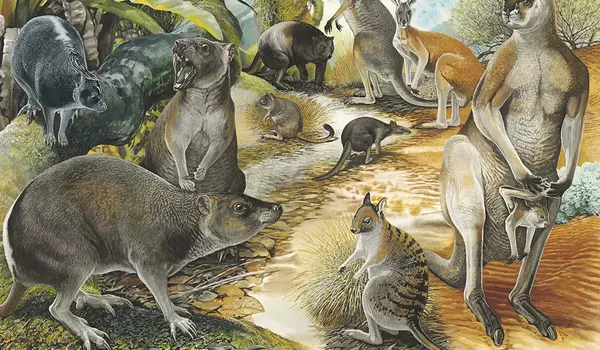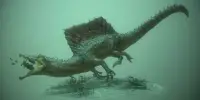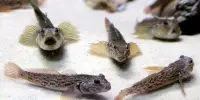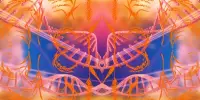Paleontologists from Australia have discovered a new genus of enormous fossil kangaroos in the mountains of central Papua New Guinea. According to the latest description of the ancient kangaroo, it most likely belongs to a separate genus of more primitive kangaroos found exclusively in PNG, rather than being closely linked to Australian kangaroos.
New Guinea has only slightly fewer mammal species than Australia, despite the fact that its surface area is only about 10% that of Australia. Monotremes (mammals that lay eggs instead of giving birth to live young like marsupials and placental animals), marsupials (Australia-New Guinea natives), bats, and rats are among the mammals found here.
Flinders University palaeontologists in Australia have described a new genus of enormous fossil kangaroos from the mountains of central Papua New Guinea. According to the latest description of the ancient kangaroo, it most likely belongs to a separate genus of more primitive kangaroos found exclusively in PNG, rather than being closely linked to Australian kangaroos.
Professor Tim Flannery characterized the kangaroo in 1983, and fossils dating back 20,000-50,000 years have been discovered. They are from the Nombe Rockshelter in Chimbu Province, Papua New Guinea, an archaeological and palaeontological site.
The New Guinean fauna is intriguing, but very few Australians have any clue of what’s truly there. There are many species of big, long-nosed, worm-eating echidnas that still exist today, as well as many wallaby and possum species that aren’t found in Australia, and many more in the fossil record.
Isaac Kerr
Nombe is already known for multiple extinct species of kangaroo and giant four-legged marsupials called diprotodontids. Flinders University researchers have renamed the animal Nombe nombe, after the location of its discovery — and plan to return to PNG for further excavations and research next year.
The squat, muscular Nombe lived in a diverse montane rainforest with thick undergrowth and a closed canopy. Here, it evolved to eat the tough leaves from trees and shrubs, with a thick jaw bone and strong chewing muscles.
Much of the animal life of New Guinea is little-known outside of the island, despite its colour and distinctiveness. This discovery breathes some new life into the exploration of New Guinea’s faunal history.
“The New Guinean fauna is intriguing, but very few Australians have any clue of what’s truly there,” says Isaac Kerr, a PhD candidate in palaeontology at Flinders University. There are many species of big, long-nosed, worm-eating echidnas that still exist today, as well as many wallaby and possum species that aren’t found in Australia, and many more in the fossil record. We think of these animals as particularly Australian, but they have this fascinating other life in New Guinea.”

Using 3D imagery and other technology, the researchers have studied remains from the PNG Museum and Art gallery. They now believe that the species may have evolved from an ancient form of kangaroo that dispersed into New Guinea in the late Miocene epoch, around 5-8 million years ago.
Due to lower sea levels at the period, the islands of New Guinea and mainland Australia were united by a “land-bridge,” rather than being divided by the flooded Torres Strait as they are now. This ‘bridge’ allowed early Australian mammals, including extinct giants, to migrate into New Guinea’s rainforests.
However, when the Torres Strait flooded again, these animal populations got separated from their Australian kin and evolved separately to suit their tropical, mountainous PNG environment. Nombe is currently thought to be a descendant of one of these old kangaroo lineages.
American and Australian researchers conducted sporadic palaeontological study there in the 1960s, 1970s, and 1980s, much of which resulted in fascinating findings of extinct megafauna. However, no palaeontological excavation have occurred there since the early 1990s, something the Flinders University researchers hope to change.
Professor Gavin Prideaux of Flinders University, a co-author on the new Royal Society study, said the research will be expanded owing to funding from the Australia Pacific Science Foundation.
“We’re really pleased to conduct three palaeontological digs in eastern and central PNG over the next three years,” he says. “We’ll be working with the curators of the Papua New Guinea Museum and Art Gallery and other contacts in PNG, with whom we hope to build some local interest in New Guinean palaeontology.”
This research was funded by the Royal Society of South Australia and the Australian Research Council.
















